Al Ashley Fellows give advice to future scientists
Three physicists talk about how they got started, their work at SLAC and what they would say to others considering a career in STEM.
By Lisa Caracciolo and Angela Anderson
Each year, college graduates with a passion for STEM come to the Department of Energy’s SLAC National Accelerator Laboratory to get hands-on experience through the Alonzo W. Ashley Fellowship Program. The program is named in honor of Al Ashley (1935-2019), who worked 31 years at the lab, championing diversity in the sciences and engineering. Supported by the efforts of the lab’s Committee for Outreach, Recruitment and Engagement (CORE) employee resource group and administered and partly funded by Human Resources, the program aims to bridge education and professional work experience for underrepresented groups.
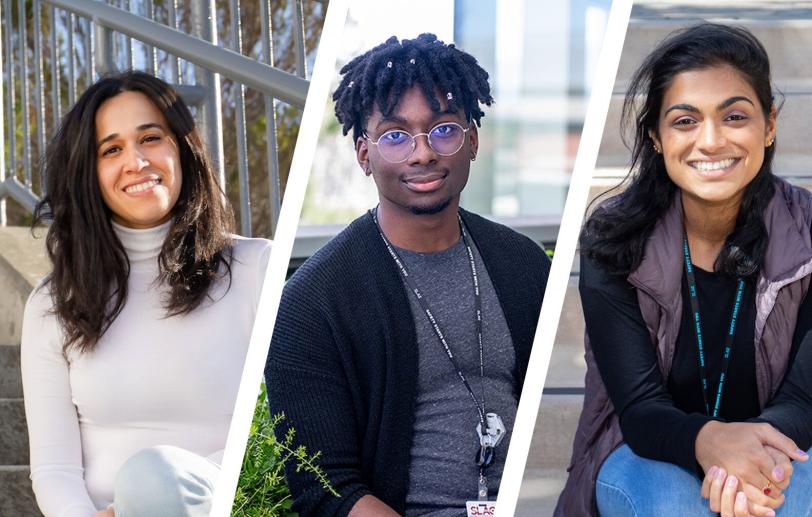
Here you will meet three of the current fellows and learn about their passion for physics, their work at SLAC and their advice on pursuing careers in STEM. Click here to learn more about the fellowship program, and visit our Careers site to apply for current openings.
Isleydys Silva Torrecilla
Hometown: Havana, Cuba
Degrees: BS and MS, Nuclear Physics, Higher Institute of Technology and Applied Sciences (InSTEC)
Isleydys Silva Torrecilla’s love of physics took a slight detour before she landed the Al Ashley fellowship at SLAC. In her native Cuba, she received both undergraduate and master’s degrees in nuclear physics and worked for a while in the field. However, when she moved to the U.S. seven years ago, she landed a job in finance.
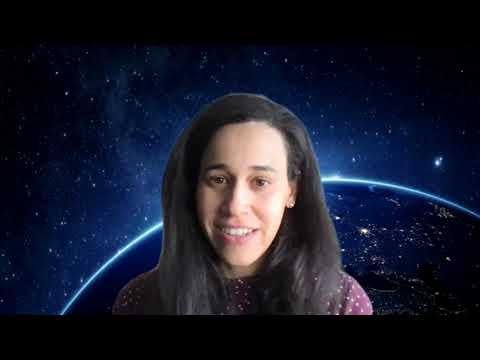
Al Ashley fellow Isleydys Silva Torrecilla
Isleydys Silva Torrecilla’s career in physics came to an end when she immigrated to the U.S. from Cuba. But applying for the Al Ashley Fellowship changed all that and now she’s happy to once again be doing what she loves at SLAC. Asked about her advice to future scientists, she talks about following your curiosity in science.
“I felt like I was in the wrong place,” she reflected about her time in finance. “This is definitely a turning point for me. Before this, I didn’t have the real opportunity to go back to physics.”
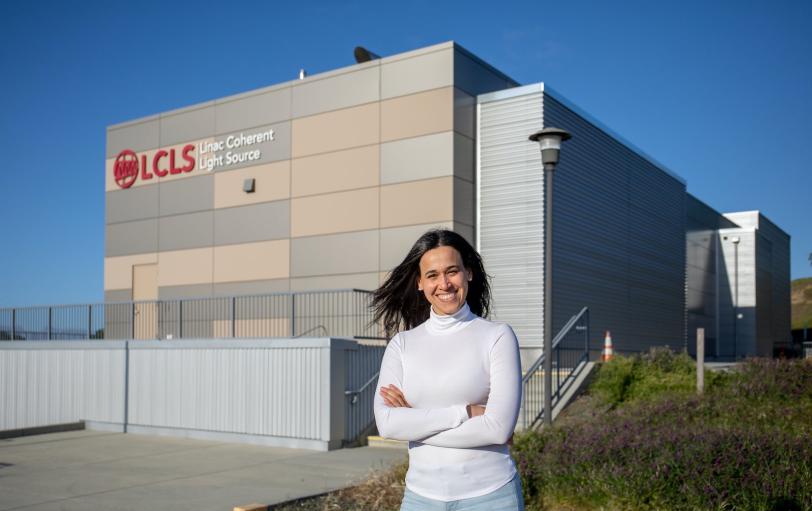
How I got into science: I wanted to be a computer scientist when I was 9, a chemist when I was 12, and by high school I got very interested in physics. My high school library had a list of the careers graduates had gone into. I saw nuclear physics and thought, “I didn’t know they had this kind of career in Cuba.” From that point on, I knew I wanted to be a physicist. I was always fascinated by physics; it explains why and how things happen, why we are here. I felt it would respond to a lot of questions I had about nature.
Fellowship projects: I’m writing a graphical user interface (GUI) for the accelerator that powers the Linac Coherent Light Source (LCLS), SLAC’s X-ray laser, and I’m helping with other codes for different GUIs that we use on the accelerator’s control system. I am also working on a collaboration with the University of California, Santa Cruz and DOE’s Los Alamos and Lawrence Berkeley national laboratories to test diamond detectors on one experimental station at LCLS with the goal of creating a diagnostic tool for X-ray free-electron lasers like LCLS. The most exciting project I’m working on is researching methods to create a “cleaner” X-ray laser beam by suppressing unwanted harmonic lasing from the beam. I’ve also been able to participate in two sessions of the U.S. Particle Accelerator School.
Advice: I would tell people to follow their curiosity. People who go into science have a desire to understand things, and that is a light that should never be turned off. I had a university professor who said, “In 10 years you might not remember everything you learn today, but you are going to have the tools to approach a problem and solve it. You are going to have the tools to know where to look for the answers.” It’s very true, not only for solving a physics problem, but for solving a lot of problems in life as well. So, follow your dream in science. And if you find out you don’t like it, at least you will have tools and skills you can use in a lot of other industries and professions.
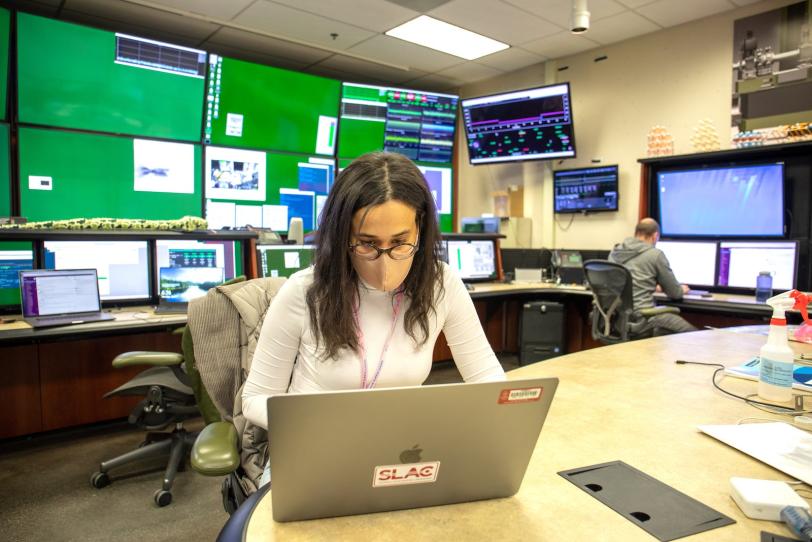
About SLAC: Everybody at SLAC has a passion for science and discovery and improving things. There are so many people and so many moving parts, all working together for the same goal. When I was studying back home at the university, I always thought SLAC was the place I wanted to go, a lab similar to CERN in Switzerland. I visited SLAC in 2013, and years later, when I saw this fellowship opportunity, I applied. To be at SLAC now is a dream come true.
Plans/dreams: I would love to stay at SLAC. There are so many interesting projects that can be done here. Every single week I see new things, and I know there is a lot of learning to pursue. I’m particularly interested in the free-electron laser division.
Other passions: I play classical music, piano and violin. I used to play violin in a community orchestra before COVID. I hope to go back to that again. I started playing piano when I was younger, but I didn’t start playing the violin until 2016.
Emmanuel Aneke
Hometown: Atlanta, Georgia
Degree: BS, Applied Physics, Georgia Tech
Emmanuel Aneke graduated from college in three years and says he is now “living the dream” and seeing the fruits of his labor after winning a research poster competition that captured the attention of SLAC’s Dorian Bohler at the National Society of Black Physicists conference in 2019. Today, he’s one of the 2020-21 Al Ashley Fellows working with the accelerator physics and diagnostics team in the Accelerator Directorate and the sample delivery team in the LCLS Directorate.
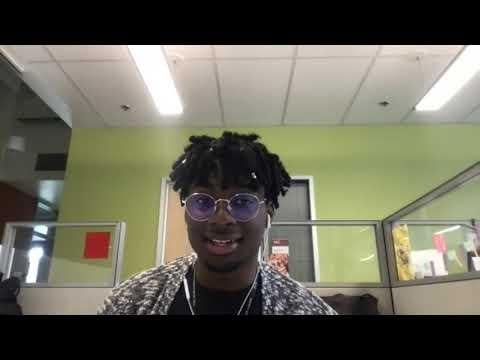
Al Ashley fellow Emmanuel Aneke
Emmanuel Aneke is “living the dream” after leaving the National Society of Black Physicists conference with a winning research poster and a business card from a SLAC employee. The connection led to an Al Ashley fellowship. Here he tells future scientists about the rewards of a career in STEM.
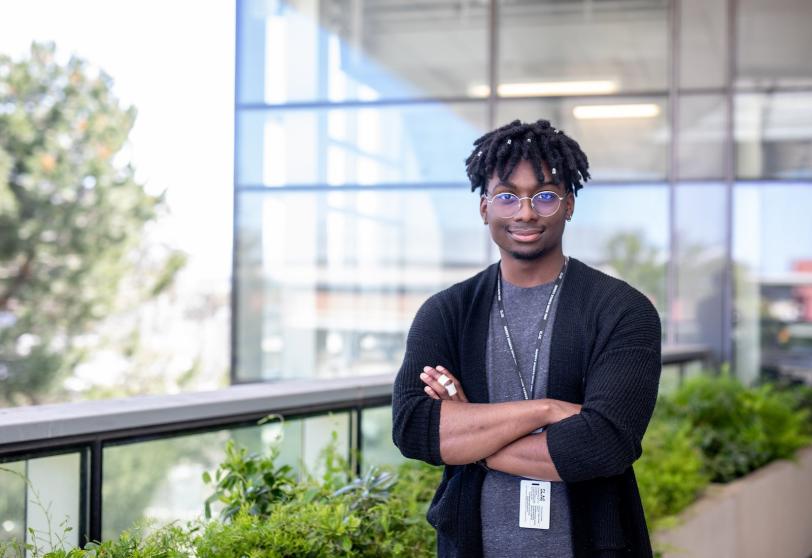
How I got into science: My interest in science began in eighth grade as we were learning about physical science. We were talking about particles – neutrons, protons and electrons – and a classmate (Bradley Gibson, I will never forget) asked the teacher, “What about quarks?” The teacher told us not to worry about quarks. I went home, googled it, and went down a rabbit hole. I found out all about particle physics, the Standard Model, the physicists, and the history, and I was pretty much sold. From that point on I was reading books, watching YouTube videos, whatever medium I could use to learn more. All thanks to the kid who asked about quarks.
Fellowship projects: In the Accelerator Directorate we make sure the machine equipment is working to produce electrons properly and that everything continues to run smoothly – everything from wire scanners to bending magnets, and quadrupoles. I’ve worked on constructing a series of mirrors and lenses on an optical breadboard; on a project to model and design a diagnostic for a small portion of beam being used for dark matter experiments; and I’m designing a camera setup to inform the concentration of material in liquid high-pressure jets of solution used in experiments. I’ve worked with lasers, old nuclear physics electronics called NIMs, accelerator simulation software, and more.
Advice: I was a math nerd in high school, and yes, I was bullied for that. But I don’t think bullying should deter you from your dreams. If you like it, you should continue with it. STEM is very rewarding, especially physics. A lot of times people consider their experiments their “babies”. And watching something that you put a lot of time and effort into grow and succeed is a wonderful feeling, especially when you know that it has the potential to change the world. The X-rays SLAC produces have all kinds of applications. If accelerator physicists didn’t exist, there would be no facility users, no molecular movies or images of condensed matter or materials science applications – there’s COVID research here, there are all kinds of avenues.
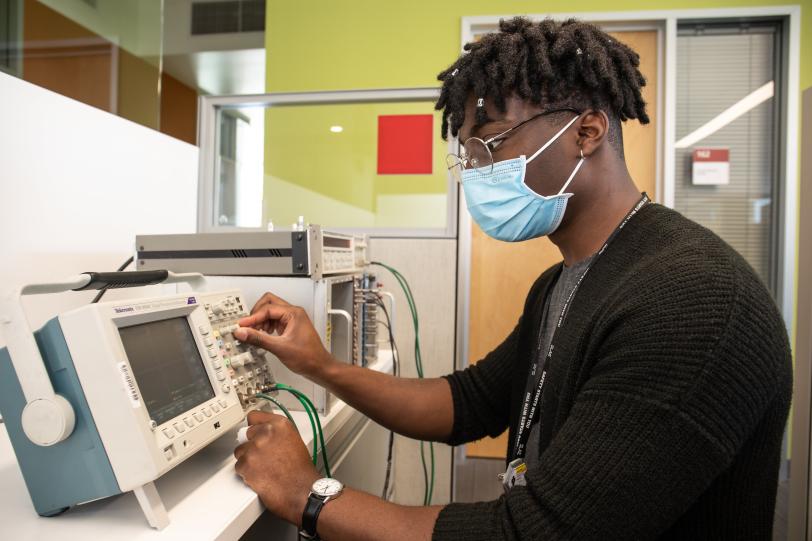
About SLAC: I am blown away by the accelerator. It really is a huge machine, so to think that we’re maintaining it and using it for research is remarkable. My favorite aspect of SLAC is that everyone here is very capable. It’s a giant collaboration, and there’s always an expert on every aspect of something. Everyone is here to get something done, and they are not caught up in stature, or publications. They just want to see this science move; they just want to see it grow.
Plans/Dreams: Right now, I plan to apply to grad school in the fall. I like accelerator physics a lot, and I intend to stick around the community and indulge in its many facets. I am still coding a lot, and getting used to UNIX systems, plus there’s a lot of electronics and hardware that’s applicable to physics, engineering or computer science. I feel like I can take my skills almost anywhere.
Other passions: One of my main hobbies is rock climbing. I competed on the collegiate level. My other hobby is the contact sport of Muay Thai that originated in Thailand. It’s very intense and built around toughening your body. I also really enjoy chess. I’m not a prodigy, but I’ve been playing since I was 7 or 8. They had a chess club in my elementary school, and I just stuck with it. I think you can tell a lot about a person by playing a game of chess with them.
Bhavna Nayak
Hometown: San Jose, California
Degrees: BS, Physics, UC Santa Barbara and MS, Physics, Cal State Los Angeles
Growing up in San Jose, Bhavna Nayak always gravitated toward STEM classes and enjoyed watching programs on the Discovery Channel and National Geographic. She was leaning toward a career in biology until an inspiring teacher sparked her passion for physics. In graduate school she found her love for large intricate machines – her thesis was on LIGO instrumentation – and she came to SLAC as an Al Ashley Fellow to explore more.
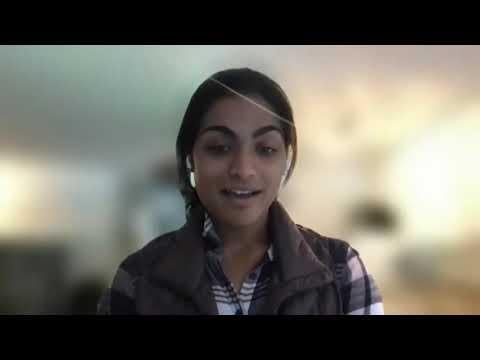
Al Ashley Fellow Bhavna Nayak
Al Ashley Fellow Bhavna Nayak talks about the role model who inspired her to trade biology for a career in physics.
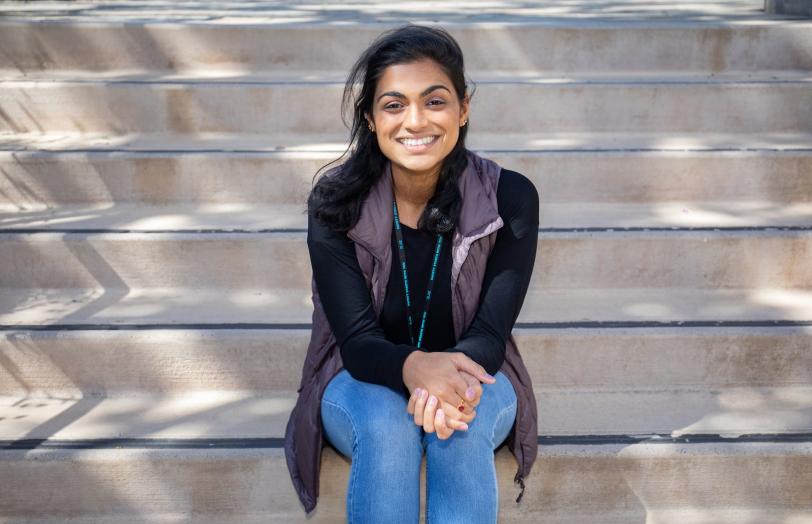
How I got into science: For the longest time I really wanted to be a conservation biologist, and then I took my first physics class my junior year of high school, and it really changed something. Physics is one of those subjects that when it clicks it is the best feeling in the world. And when it doesn’t, it’s really hard. But you keep working at it, and the eventual understanding of the world around you is so rewarding. I decided there are so many questions about the universe I can pursue by studying physics.
Fellowship projects: I work with the LCLS detector group, an exciting place to be because we manage, calibrate and characterize the semiconductor radiation detectors that are used for the LCLS experiments – no small task. The technology that is used for the detectors is so incredibly advanced, and we are working towards fully understanding detector behavior so facility users have the most accurate experimental data. My specific projects include creating a monitoring and alert system for detectors when they're out in experimental stations to ensure they're operating under the right conditions; writing a script that we can run every couple of months to fully characterize detector behavior and evaluate important parameters; and analyzing experimental data to better understand our autoranging detectors. There's so much work to be done, and every day brings me something new and exciting to tackle.
Advice: I would say keep pursuing what you love because there are so many opportunities out there. It might take a little bit of hunting, but if it’s what you love, keep pursuing it. And take the time to make connections because having a mentor, or a support network among your peers, is incredibly helpful. It’s helped me be more successful in my field. To be able to reach out to people and to have role models is so important – find those positive role models in your life.
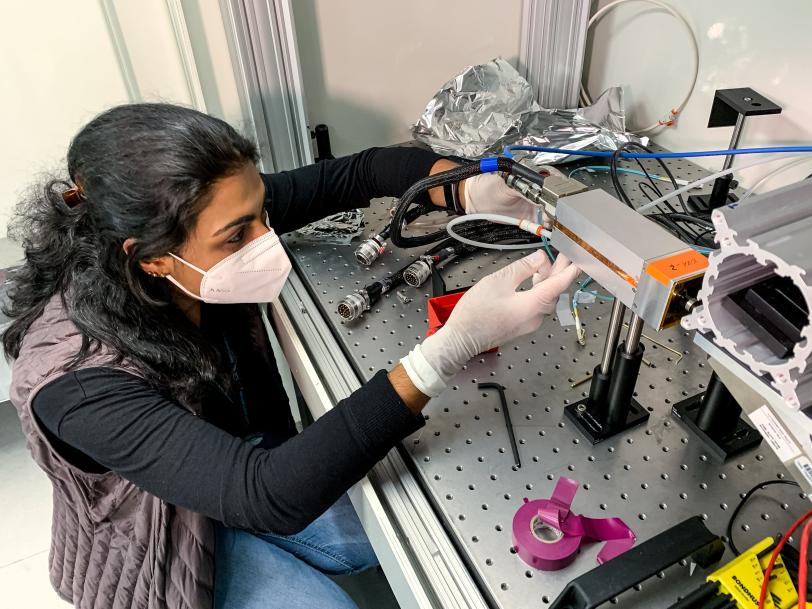
About SLAC: I like being part of something that is bigger than myself. That’s why I explored national labs and SLAC in the first place. I ultimately wanted to apply my classroom knowledge to a setting where it mattered and where I could use it frequently, and national labs seemed like the best place for that to happen. One of my colleagues in my master’s program had done the fellowship here and said it was an amazing place to work with amazing people. His experience inspired me to pursue this fellowship and all of the exciting scientific and engineering work it entails. Being at the forefront of discovery and contributing in some way to scientific advancement has been a life goal for me, and what better place to do that than at a national lab?
Plans/dreams: I haven’t given up on the idea of one day pursuing my PhD, but for now I like where I am. I plan to learn as much as I can and use this experience to focus in on the exact field and position I want. This fellowship is a huge learning experience, not just on the academic side but also on the professional development side. I’m finding that I really like my position and being a member of this organization.
Other passions: I really enjoy hiking and camping. Eventually I want to work my way up to backpacking. It would be an absolute dream to hike the full Pacific Crest Trail, but I'd be happy to do even a small section of it, which is maybe a bit more realistic. I also love running and hope to do my first marathon next year. If I'm not out running or hiking, you can find probably find me trying out a new recipe, playing board games, or cozying up with a book.
LCLS is a DOE Office of Science user facility.
For questions or comments, contact the SLAC Office of Communications at communications@slac.stanford.edu.
About SLAC
SLAC National Accelerator Laboratory explores how the universe works at the biggest, smallest and fastest scales and invents powerful tools used by researchers around the globe. As world leaders in ultrafast science and bold explorers of the physics of the universe, we forge new ground in understanding our origins and building a healthier and more sustainable future. Our discovery and innovation help develop new materials and chemical processes and open unprecedented views of the cosmos and life’s most delicate machinery. Building on more than 60 years of visionary research, we help shape the future by advancing areas such as quantum technology, scientific computing and the development of next-generation accelerators.
SLAC is operated by Stanford University for the U.S. Department of Energy’s Office of Science. The Office of Science is the single largest supporter of basic research in the physical sciences in the United States and is working to address some of the most pressing challenges of our time.





